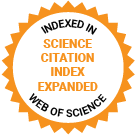Journal of Medical Internet Research
The leading peer-reviewed journal for digital medicine and health and health care in the internet age.
Editor-in-Chief:
Gunther Eysenbach, MD, MPH, FACMI, Founding Editor and Publisher; Adjunct Professor, School of Health Information Science, University of Victoria, Canada
Impact Factor 5.8 CiteScore 14.4
Recent Articles

Artificial intelligence (AI) predictive models in primary health care have the potential to enhance population health by rapidly and accurately identifying individuals who should receive care and health services. However, these models also carry the risk of perpetuating or amplifying existing biases toward diverse groups. We identified a gap in the current understanding of strategies used to assess and mitigate bias in primary health care algorithms related to individuals’ personal or protected attributes.

Nowadays, optimal patient care should be based on data-driven decisions. In the course of digitization, hospitals, in particular, are becoming complex organizations with an enormously high density of digital information. Ensuring information security is, therefore, essential and has become a major challenge. Researchers have shown that—in addition to technological and regulatory measures—it is also necessary for all employees to follow security policies and consciously use information technology (compliance), because noncompliance can lead to security breaches with far-reaching consequences for the organization. There is little empirical research on information security–related behavior in hospitals and its organizational antecedents.

Patients undergoing surgery often experience stress and anxiety, which can increase complications and hinder recovery. Effective management of these psychological factors is key to improving outcomes. Preoperative anxiety is inversely correlated with the amount of information patients receive, but accessible, personalized support remains limited, especially in preoperative settings. Face-to-face education is often impractical due to resource constraints. Digital health (DH) interventions offer a promising alternative, enhancing patient engagement and empowerment. However, most current tools focus on providing information, overlooking the importance of personalization and psychological support.

Artificial intelligence–driven clinical decision support systems (AI-CDSSs) are pivotal tools for doctors to improve diagnostic and treatment processes, as well as improve the efficiency and quality of health care services. However, not all doctors trust artificial intelligence (AI) technology, and many remain skeptical and unwilling to adopt these systems.

Recruiting and retaining participants in pediatric research has always been challenging, particularly in healthy populations and remote areas, leading to selection bias and increased health disparities. In the digital age, medical research has been transformed by digital tools, offering new opportunities to enhance engagement in clinical research. However, public perspectives on digitalizing pediatric research and potential differences between urban and suburban areas remain unclear.

Large language models (LLMs) are rapidly advancing medical artificial intelligence, offering revolutionary changes in health care. These models excel in natural language processing (NLP), enhancing clinical support, diagnosis, treatment, and medical research. Breakthroughs, like GPT-4 and BERT (Bidirectional Encoder Representations from Transformer), demonstrate LLMs’ evolution through improved computing power and data. However, their high hardware requirements are being addressed through technological advancements. LLMs are unique in processing multimodal data, thereby improving emergency, elder care, and digital medical procedures. Challenges include ensuring their empirical reliability, addressing ethical and societal implications, especially data privacy, and mitigating biases while maintaining privacy and accountability. The paper emphasizes the need for human-centric, bias-free LLMs for personalized medicine and advocates for equitable development and access. LLMs hold promise for transformative impacts in health care.

Oral microenvironmental disorders are associated with an increased risk of heart failure with preserved ejection fraction (HFpEF). Hyperspectral imaging (HSI) technology enables the detection of substances that are visually indistinguishable to the human eye, providing a noninvasive approach with extensive applications in medical diagnostics.

Avoiding technological innovation does not simplify life. In fact, using internet-based medical services can enhance the quality of life for older adults. In the context of an aging population and the growing integration of information technology, the demand for internet-based medical services among older adults is gaining increased attention. While scholars have highlighted the important role of intergenerational support in promoting digital inclusion for older adults, research on the relationship between intergenerational support and older adults’ intentions to seek online care remains limited.


Health care innovation faces significant challenges, including system inertia and diverse stakeholders, making regulated market access pathways essential for facilitating the adoption of new technologies. The German Digital Healthcare Act, introduced in 2019, offers a model by enabling digital health applications (DiGAs) to be reimbursed by statutory health insurance, improving market access and patient empowerment. However, the factors influencing the success of these pathways in driving innovation remain unclear.

The increasing use of social media to share lived and living experiences of substance use presents a unique opportunity to obtain information on side effects, use patterns, and opinions on novel psychoactive substances. However, due to the large volume of data, obtaining useful insights through natural language processing technologies such as large language models is challenging.

In recent years, health care has undergone a rapid and unprecedented digital transformation. In many fields of specialty care, such as rheumatology, this shift is driven by the growing number of patients and limited resources, leading to increased use of digital health technologies (DHTs) to maintain high-quality clinical care. Previous studies examined user acceptance of individual DHTs in rheumatology, such as telemedicine, video consultations, and mHealth. However, it is essential to conduct cross-technology and continuous analyses of user acceptance and DHT use to maximize the benefits for all relevant stakeholders.
Preprints Open for Peer-Review
Open Peer Review Period:
-
Open Peer Review Period:
-
Open Peer Review Period:
-
Open Peer Review Period:
-
Open Peer Review Period:
-

















